"after all, it's not too bad, and you can eat Kofi": the taste of coffee in Shanghai culture.
According to statistics at the end of 2016, Shanghai has 5567 cafes, making it the city with the highest number of cafes in the country, 2200 more than Beijing in second place and twice as many as Guangzhou in third place.
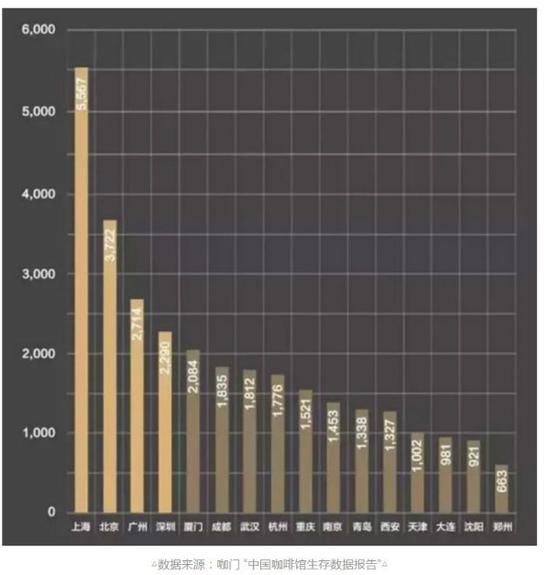
Many people will take it for granted that there are so many cafes in Shanghai because of the recent business and economic development. But I don't know that coffee culture is here, but it has already planted the seeds.
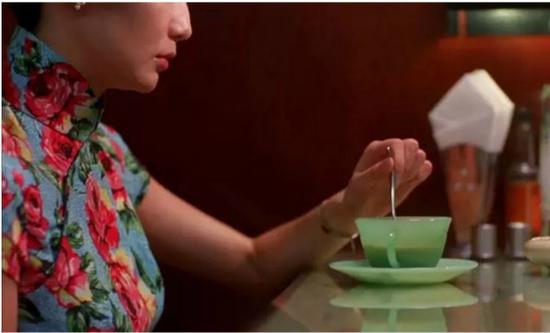
In the movie in the mood for Love, Su Lizhen, a native of Hong Kong and Shanghai, drinks coffee.
Since the end of the Qing Dynasty and the beginning of the Republic of China, whether it is a period of prosperity or turbulence, people here always like to hold coffee, chat, and live a leisurely and fastidious life.
In particular, those Shanghai-style literati always linger in cafes, where many new ideas and new literature were born.
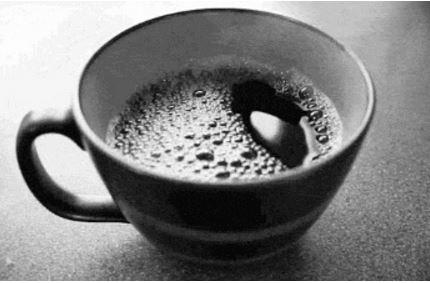
Following the slightly bitter fragrance, it seems to be able to go back to the old days of the city.
Shanghai and the origin of coffee
Coffee is an imported product, and when it was first introduced into China, it must have appeared in Shanghai, where the new school of figures gathered.
The first person to provide coffee was the Old Deji drugstore opened by British pharmacist J. Lewellyn at No. 1 Garden (now Nanjing East Road) in 1853. Although it is called a drugstore, it also deals in pastries and foreign food.
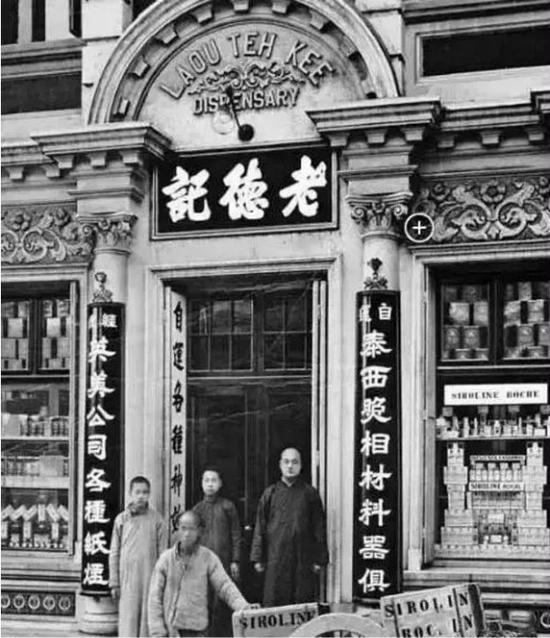
It says on the door, "carry all kinds of magic medicine by yourself."
This wonderful bitter brown liquid was called "cough potion" at first, but later became fashionable with the promotion and popularization of western food.
In Zhu Wenbing's Zhuzhi ci on the Sea in 1909, there was already a poem about coffee:
"Kao Fei has a common name, and it is made of beans in the market.
Colored sugar is sweet and bitter, and westerners cook every meal instead of tea. "
In the same year, Mrs. Gopiti, an American missionary of the Christian Church in Shanghai, published China's earliest Western cooking book, the Book of making Foreign Rice, which also mentions coffee and explains that foreigners drink coffee after meals to aid digestion. By 1946, nearly 200 cafes had been opened in Shanghai.
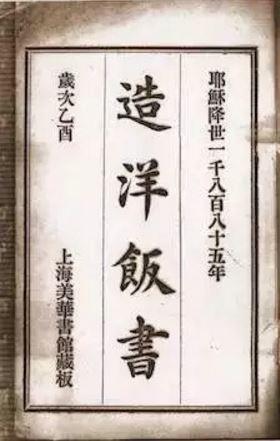
The first edition of the Book of making Foreign Rice is like a secret book of martial arts.
Before the official name of "coffee" was decided, there were a variety of translations in the early years, such as "Kao Fei", "Jiafi", "Gao Yi" and "making a foreign rice book". It's probably to attract girls who focus on body control.
"if you burn it in a fierce fire, shovel it frequently so as not to scorch it black.
Bake well, add some cream while it's hot.
Cover the bottle with a lid and roll it when you want to use it. "
-- making a Book of Foreign Rice
The seasoning methods of coffee vary with the region, such as Ruyi concentrate, French O'Lei, American black coffee, Hong Kong-style mandarin duck, Irish coffee wine, Greek Farabe.

In Shanghai, it also gives rise to a unique flavor.
In an age when there were no coffee utensils, fancy Shanghainese knew how to make coffee in the most primitive way:
Wrap the coffee powder in gauze and boil it in a steel pot. More authentic, the brewed coffee will be filtered again with filter paper to make it taste purer.
Some people prefer condensed milk to their coffee, which is similar to Vietnamese coffee. And with a spoonful of whipped cream, the kind that rubies sell. Some people even mix it with wheat cream and match it with two pieces of salted soda cracker.

Eileen Chang's favorite is milk coffee:
"other people read Hemingway's novels.
Thought I liked American style as much as he did.
Actually, this is a misunderstanding. I like milk coffee.
You'd better put low-fat milk so that the milk is less fishy. "
Shanghai Coffee memory after Liberation
So the coffee takes root here.

The red round iron cans marked with "Shanghai Brand" contain ground roasted coffee with a tin of half a pound of 3.50 yuan, which is a familiar taste to old Shanghainese. In order to show the tone, even after drinking, put the iron can in a conspicuous position in the glass cabinet.
Old-fashioned jars can still be found in the secondhand market. at that time, Shanghai brand coffee started at Desheng Cafe on Nanjing Road, and in the coffee industry, it was like Coca-Cola at the top of the market. From the 1960s to 1980s, all the coffee sold in Shanghai came from the Shanghai Coffee Factory. At one time, Shangcachang even took all the coffee from cafes and hotels all over the country, and became a "national memory."
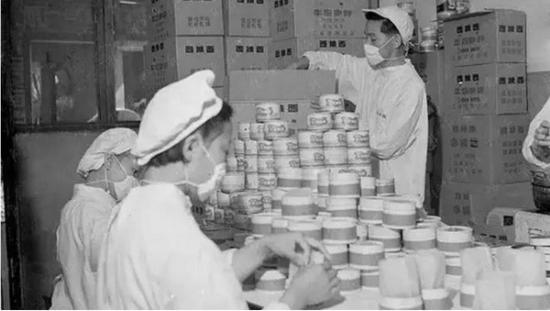
Shanghai Coffee Factory
The Shanghainese's childhood beverage giants: happy Koufu, Milk Milk, and Chrysanthemum Crystal, are also made in a curry factory, which is not only delicious, but also much healthier than today's common drinks, especially Chrysanthemum Jing, whose name is magic, but it can relieve summer heat, calm the liver and clear the eye. Now you can still find it on the Internet, you might as well buy it and have a taste of that era.
Since the end of the Qing Dynasty and the beginning of the Republic of China, coffee culture has never faded out of Shanghai after various reforms and changes. Even in the era of lack of resources, coffee was still brewed on the stove in old Shanghai.
"there is still coffee in Shanghai during the three-year difficult period. In order to stimulate sales, you can get half a jin of white sugar tickets if you buy a tin of Shanghai brand coffee. If you eat coffee in a coffee shop, you can get four extra cubes of sugar and a small cup of fresh milk. At that time, my parents seemed to be more keen on sugar-free and milk-free black coffee, and then carefully built the sugar cubes into a pyramid like a diamond. If so, my brother and I often have thick white sugar rice porridge to drink. "
Cheng Naishan, the memory of Coffee
When most people could not afford coffee during the three-year natural disaster in 1961, the Shanghai Coffee Factory invented low-cost "coffee tea" to replace it.
The so-called coffee tea is to grind the coffee beans into fine powder, spread layers of powdered sugar and coffee powder in the mold, compacted and dried, and cut into small pieces of packaging. When drinking it, put it directly into the boiling water like instant coffee. Although it doesn't taste good, it is always tastier than plain boiled water.

"one piece of boiled water per cup."
Coffee and Shanghai Culture
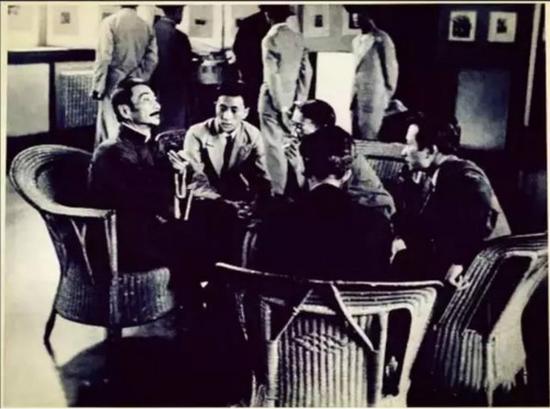
The gathering place of Shanghai-style literati
The concept of Shanghai-style literature appeared in the 1930s, and the most representative of them, the New feeling School and the Mandarin Duck and Butterfly School, are similar to coffee-heavy bitterness anxiety, slightly sour sadness, and an ethereal sweet aftertaste.
In the "Mandarin Butterfly School" at the beginning of the Republic of China, there are words in Zhou Lianjuan's "Sheng Cha Zi": "even more bitter, absolutely like Acacia."
Shanghai-style literati and cafes seem to have sprung up in Shanghai at the same time. The cafe in old Shanghai is not just a place to drink coffee, but more like a "public space" in the city.

In the article Coffee, the writer Ma Guoliang talked about his experience of overhearing the conversation between two women in a cafe in Shanghai.
"they are talking about literature and art, the Kuomintang, politics, everything.
When they finished talking about Guo Moruo, they said Lu Xun, Yu Dafu, Wang Ching-Wei and Chiang Kai-shek. "

Surrounded by coffee and jazz, diversified exchange of ideas seemed to have become a custom among intellectuals at that time. On August 8, 1928, Shenbao placed a soft advertisement called "Shanghai Coffee", which read:
"... There I met today's literary and art celebrities, Binglu, Lu Xun, Yu Dafu and so on. And I got to know Meng Chao, Pan Hannian, Ye Lingfeng and so on. Some of them talked high about their ideas there, and some of them meditated silently. I learned a lot of lessons there. "
When it comes to the old Shanghai Cafe, which is favored by intellectuals, the "public coffee" located on the North Sichuan Road must be mentioned. At that time, Mr. Lu Xun often discussed with the leading members of the "League of the left" and representatives of the underground party in this secret joint, and Lu Xun's diary went to similar records of "drinking coffee with Rou Shi in the afternoon of June 5, 1930."
Although he claimed that he did not like this kind of "food for foreign adults", he once satirized the novelist Zhang Ziping:
"there is no genius. I just spend other people's coffee time at work."

Cafes not only serve as a source of inspiration, but also become the background of literary creation. If you want to ask which writers wrote about cafes in Shanghai at that time, there are countless.
The one-act play "one Night of the Coffee Shop" created by Tian Han in 1921 was the first to express "Cafe sentiment" in the new literary works. Others include Xu Kuo's "the temptation of Gypsy", Lin Huiyin's "Lady of the Flower Hall", Wen Zichuan's "the maid of the Coffee Shop", Zhang Ruogu's "Coffee discussion" and so on.

It is said that the scene of Wang Jiazhi sitting at Kai Commander in Lust and caution was inspired by this old photo of the cafe.

"Lust, caution" stills
Times have changed, and almost all the old cafes on Nanjing Road, Xiafei Road, North Sichuan Road and Yalpei Road have disappeared with history, and today we can only imagine and recall them through the words written by the literati.
This article was originally published in the official account "hippopotamus residence Guide" on Wechat, but it was reprinted by authorization and abridged by thepaper.cn. The original title was "after all, it's not too bad, you can eat Kaofei", but now the title and subtitle are drawn up by the editor.
Important Notice :
前街咖啡 FrontStreet Coffee has moved to new addredd:
FrontStreet Coffee Address: 315,Donghua East Road,GuangZhou
Tel:020 38364473
- Prev
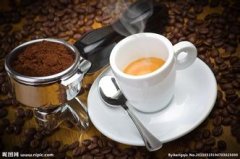
Our city has a coffee culture experience hall.
If you want to grind beans, cook, pull flowers and drink the results, a coffee culture experience hall in our city has opened this service. It is understood that the Kavi Coffee Culture experience House opened on a trial basis in January this year. It is the first coffee shop in the city that focuses on coffee cultural experience, roasting coffee beans and selling coffee utensils. Here, consumers and cafe operators can not only go straight
- Next
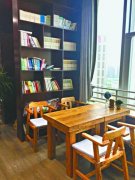
Baoding 1898 Coffee: a Bridge between Government and Enterprises
1898 Coffee creates a corner of the space. Li Ruyi walked into the Zhongguancun Innovation Center in Baoding, and the LED screen at the entrance on the first floor was showing advertising films of a certain brand. Standing on the side of the machine is one person tall, the screen has been rolling advertisements, this machine in the media publicity, but also an air purifier. When haze is serious, it can also purify indoor air.
Related
- Customers have "changed" Manner's new products! Shop assistant: Please don't mess around!
- Remove sockets in customer areas at Starbucks stores?! Netizen: I won't go if I really tear it down
- What is the difference between the taste steps of sun-dried coffee and washed coffee? Why is sun-cured coffee sweeter and washed coffee sour?
- The recipe for salty grapefruit dirty is revealed! Coffee Festival salty grapefruit dirty coffee making materials parameters ratio milk share!
- How about the flavor of Sunlight 74158 at Sidamo Banshaha Mathieu Processing Factory in Ethiopia? 74158 Share the proportion of coffee brewing parameters!
- What effect does Italian American coffee with filter paper have? Will coffee taste better if it is put on filter paper at the bottom of the powder bowl?
- What is the color difference in coffee beans? What are the characteristics of honey processed coffee beans? Why are the anaerobically treated coffee beans uneven in color?
- How does novice Xiaobai quickly get started and make coffee? Newbies learn to make coffee by hand and share the specific steps and process process!
- Costa tea has a shelf life of 100 years?! Expert: Unable to verify
- It's a huge uproar! American milk addition was rejected by Manner employees?!

